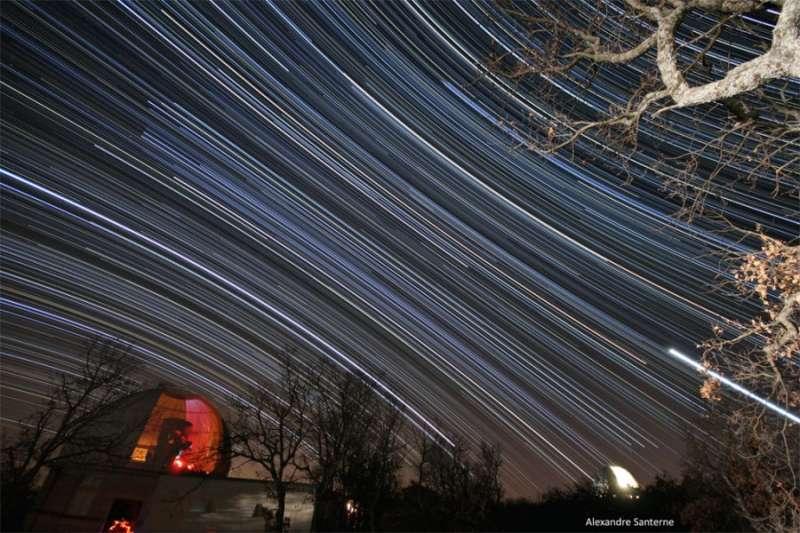Credit & Copyright: Alexandre Santerne
Explanation:
Fix your camera to a tripod and you can record the graceful
trails
traced by the stars as planet Earth
rotates on its axis.
For example, this dramatic 5 hour long exposure was
made on February 24 from
Haute-Provence Observatory (OHP)
in southeastern France.
Actually a composite of 300 consecutive 1-minute exposures, the image
nicely shows stars near the celestial equator tracing nearly straight
lines in projection, while stars north and
south of the equator,
respectively, appear to
circle the north and south
celestial
poles.
Domes at the bottom left and right house the OHP telescopes.
Brilliant planet Venus makes the short
bright trail at the lower right, while
trails of stars in the
end near the lower right observatory dome.
Sirius,
alpha star of Canis Major, traces the bright arc over the dome at
the left.
Astronomer Alexandre Santerne also briefly illuminated a foreground
oak tree during the exposure sequence.
1999 2000 2001 2002 2003 2004 2005 2006 2007 2008 2009 2010 2011 2012 2013 2014 2015 2016 2017 2018 2019 2020 2021 2022 2023 2024 2025 |
Yanvar' Fevral' Mart Aprel' Mai Iyun' Iyul' Avgust Sentyabr' Oktyabr' Noyabr' Dekabr' |
NASA Web Site Statements, Warnings, and Disclaimers
NASA Official: Jay Norris. Specific rights apply.
A service of: LHEA at NASA / GSFC
& Michigan Tech. U.
|
Publikacii s klyuchevymi slovami:
sledy zvezd - Nebesnyi ekvator - Nebesnaya sfera - vrashenie Zemli
Publikacii so slovami: sledy zvezd - Nebesnyi ekvator - Nebesnaya sfera - vrashenie Zemli | |
Sm. takzhe:
Vse publikacii na tu zhe temu >> | |
